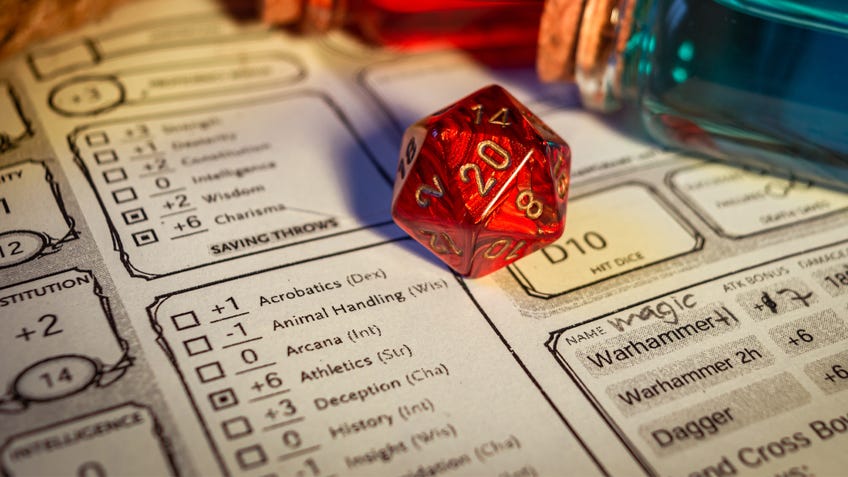How to make a D&D character for beginners
A step-by-step guide to making your hero.
Dungeons & Dragons can be incredibly overwhelming for new players, especially when they have to learn how to make a D&D character.
A surprising amount of work goes into creating a character for D&D, it’s not just picking a class and playable race/species. The nature of D&D being a tabletop roleplaying game means that it requires players to do some maths before they can play - which can be rightfully off-putting
Nevertheless, having a good understanding of how your character’s stats work from the start will make playing the actual tabletop RPG a lot easier in the long run. Once you’ve grasped how to figure out your character stats, using those numbers and levelling up will be a lot more straightforward.
How to make a D&D character for beginners
- Choose your class
- Choose your race/species
- Calculate your ability scores
- Calculate your hit points
- Calculate your AC
- Choosing your feats
- Choosing your skills
- Figuring out your proficiency modifier
- Choosing your spells
- Choosing your equipment
Thankfully, our guide to creating a Dungeons & Dragons character is ideal for beginners. Using this step-by-step walkthrough will make the entire endeavour feel a lot less daunting, with every task broken down and explained to hold your hand. It’s time to make your own D&D character!
1. Choose your class
What’s your playstyle?
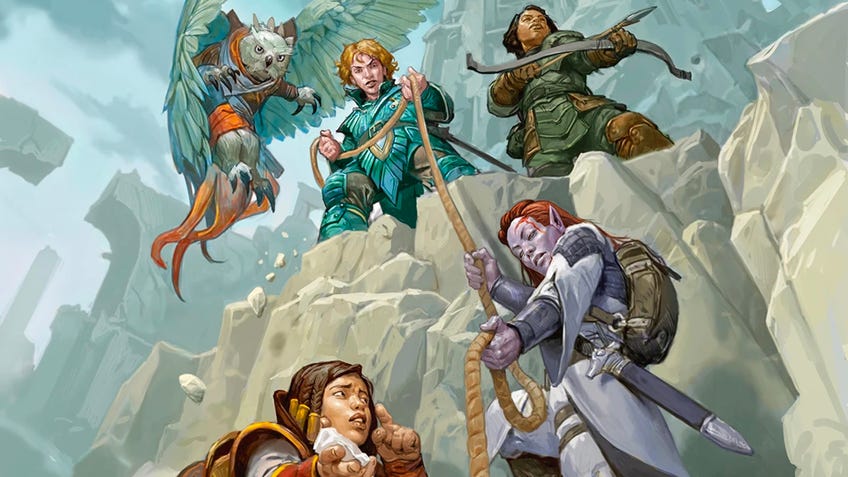
Choosing your character’s D&D class is probably the most important choice you’ll make when creating your character. Which class you play will affect how your character will be able to interact with the world of Dungeons & Dragons, both in and out of combat.
Whilst some classes in Dungeons & Dragons favour characters designed for close-up and personal fighting, others are better suited to staying on the sidelines. Some classes are able to cast spells, while others are more focused on swinging weapons.
Deciding between the D&D classes may be a matter of wanting to cast certain types of spells, wanting to wield particular weapons or wanting specific feats or abilities. Other times, selecting a class is a choice that’s driven by a desire to create and play a certain archetype or to fit background aspects of a character you’ve already imagined.
You can find more specific guidance on this topic in our guide on which D&D class to choose.
2. Choose your race/species
Who is your character?
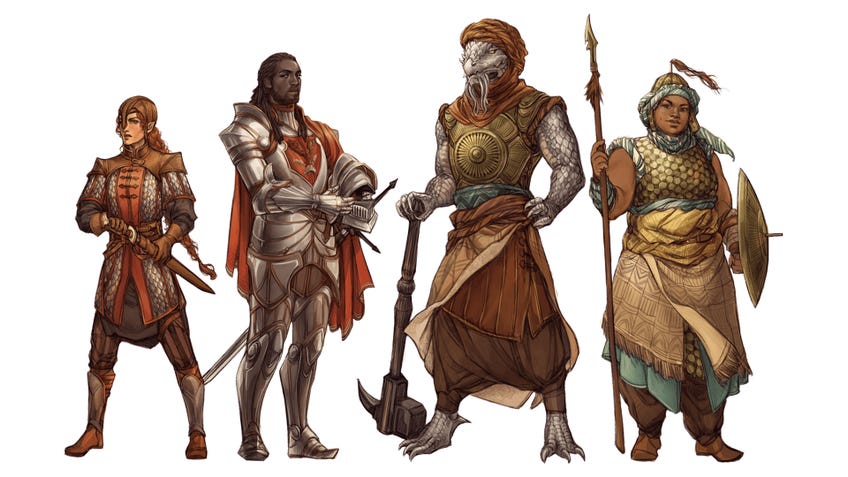
Though less important than your character’s class, race/species still has an effect on your Dungeons & Dragons character. Thanks to recent changes made to the RPG – which you can find in D&D sourcebooks like Tasha’s Cauldron of Everything or in playtest materials for the upcoming One D&D - picking a certain race/species no longer give your character stat advantages and disadvantages.
However, specific unique features and attributes will still apply to certain races/species, such as dragonborn characters having a dragon ancestry ability. Beyond the abilities and features of each race/species, selecting a certain option will affect aspects like average size, lifespan and movement speed.
There’s also the appearance and social aspects of race/species to consider, with certain races/species - such as tieflings or drow – potentially facing prejudice depending on who they interact with. You might just be drawn to how a particular race/species looks and pick one for purely aesthetic reasons.
You can find more specific guidance on this topic in our guide on which D&D race/species to choose.
3. Calculate your ability scores
Figure out your stats

Ability scores are your D&D character’s primary statistics and determine how good they are at doing anything. These stats consist of strength, constitution, intelligence, wisdom, charisma and dexterity, and can be generated into two very distinct ways.
If you like to live life on the edge, then for each stat score you can roll four six-sided dice and add up the three highest scores; do this six times and you have your ability scores.
Otherwise, you could assign the scores 15, 14, 13, 12, 10 and 8 to the abilities of your choice - for example, STR: 12, INT: 8, CHA: 15, WIS: 13, DEX: 13, CON: 10 - which ensures that you start with a well-rounded character that leans just enough into the abilities you want them to specialise in.
Your ability scores will determine your modifiers – in other words, how much you’ll be able to add to your rolls when performing ability checks. There is a nice boring table on page 13 of the D&D 5E Player’s Handbook which you can refer to when you’re filling in the ability modifier section of your character sheet.
4. Calculate your hit point totals
How much damage can you take?
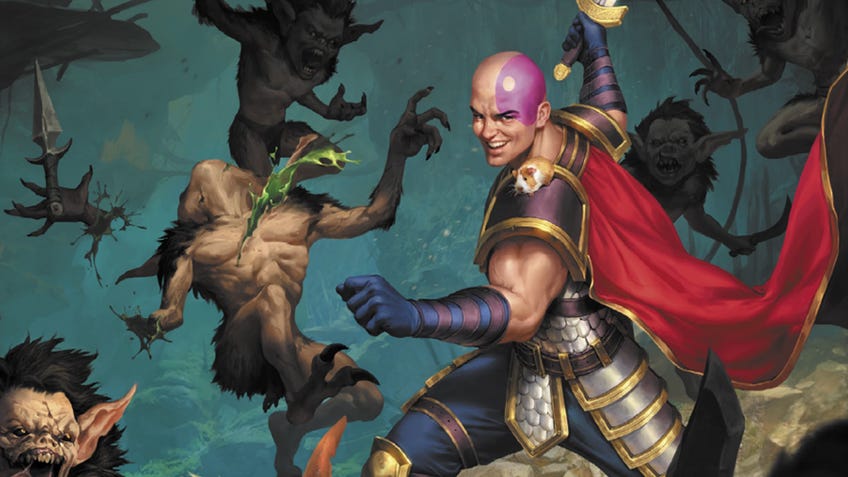
Hit points represent how much of a beating your character can take before they kick the bucket, hypothetically speaking. In Dungeons & Dragons, the great mysterious and magnitude of life and death is distilled into a system of unconsciousness and saving throws.
When you take damage, you take it out of your current pool of hit points. When that pool hits zero, your character falls unconscious - which is bad. You then have a chance to stabilise or permanently perish, depending on whether you make three successful death saving throws or if one of your beloved party members heals you in time.
At first level, you calculate your hit points by adding your constitution modifier to the highest possible total of your class’s assigned hit die. For example, if you’re a level one cleric with a constitution modifier of +3, then your hit point maximum with be 11.
Don’t be alarmed by how few hit points you have to start with! You will gain more as you level-up and the challenges you face should scale to this.
5. Calculating your armour class (AC) rating
What are your defensive capabilities?

Your armour class is what enemies will have to roll to successfully hit you and is generated by adding the AC rating of your armour and your dexterity modifier.
Certain races/species and classes will enable you to wear certain types of armour, with the heaviness of the armour contributing to its AC rating, alongside any specific aspects that armour might have.
Wearing lighter armour means exchanging greater protection for more speed, with heavier armour having the exact opposite consequences.
Your approach to armour class really just depends on what kind of character you want to create, as there are factors to consider beyond just speed versus protection. For example, wearing heavier armour can hamper your ability to cast spells.
6. Choosing your feats
Pick your abilities
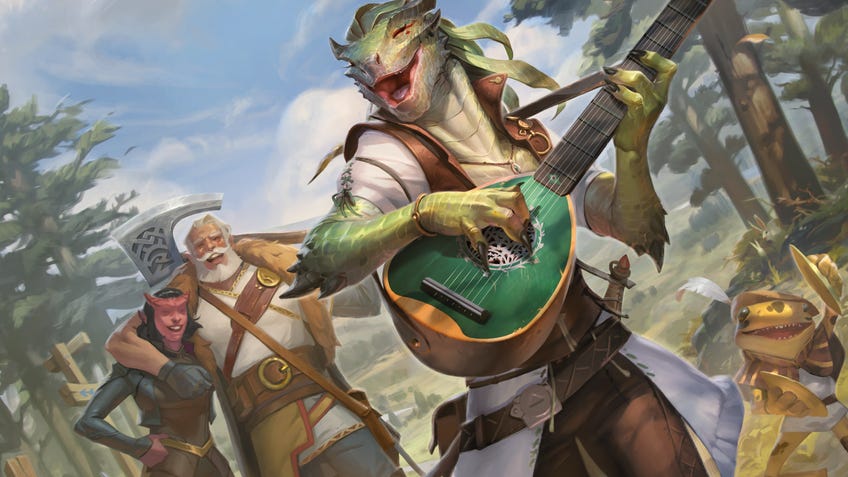
Think of feats, or features, as being unique abilities that your character can perform, thanks to either experience or innate talents.
Unlike skills and spells, they cover a very broad range of abilities, from running faster to being able to cast certain spells. Feats are not traits, which are abilities exclusive to certain races/species, and they’ll mostly come into play when creating or levelling-up your character.
You’ll gain certain feats from simply choosing a certain class, such as the bardic inspiration feat for bards, whilst others will come from choosing between subclass options - such as deciding between different druid circles.
Choosing between class options can be entirely driven by which feats you’d prefer to take. When you’re thinking about which feats to take with your class - and this applies to levelling up as well - refer back once again to how you envision your character and what choices you’ve already made, such as the class, weapons and race/species you’ve picked.
If you’re confused as to the specifics of a feat, we recommend that you have a search on D&D cataloguing sites like Roll20 or D&D Beyond, as they tend to tie related feats and other character aspects with one another, giving you some guidance on what might work.
Our own class guides – to rogues, wizards, bards and more – will provide more specific guidance on which feats do what and how to decide between them, if you’re looking for more help.
7. Choosing your skills
What is your character good at?
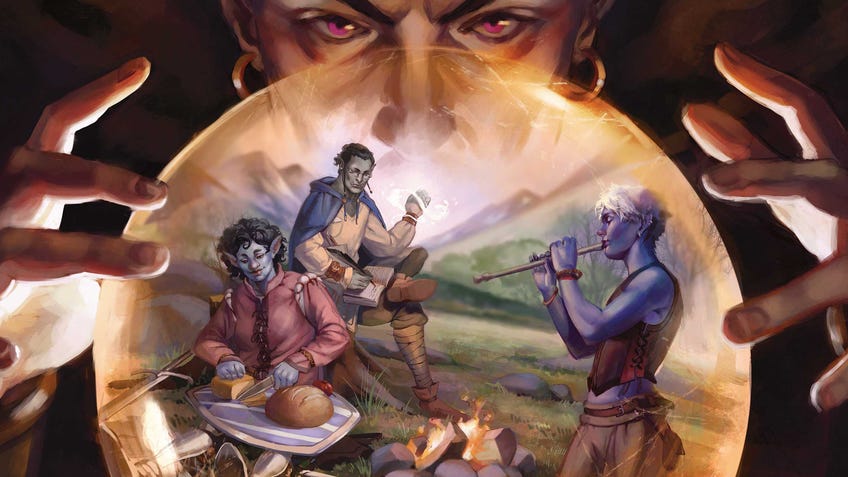
Skills are the talents your D&D character is proficient in, meaning that when you’re asked to roll ability checks you will be able to add a bonus modifier to your result - thereby increasing the likelihood that you’ll pass the check.
The skills you’re proficient in will likely depend upon your character’s ability scores, as each set of skills are attached to a certain core ability. For example, acrobatics is a dexterity-based skill, whereas athletics is affected by strength.
When creating your character, depending on which race/species and class you choose, you’ll automatically gain proficiency in certain associated skills. For example, taking the warlock class grants a character proficiency in deception, history, intimidation, investigation, nature and religion.
Some classes will grant characters more opportunities to gain greater proficiency in more skills. For example, when you reach level three in the bard class, you get to improve your proficiency score on skills you aren’t already proficient in - this is called the Jack of All Trades feature. It might be good to bear this in mind when choosing your character, if you’re into the idea of gathering a juicy selection of skills.
8. Figuring out your proficiency modifier
The right numbers to add to your skill rolls
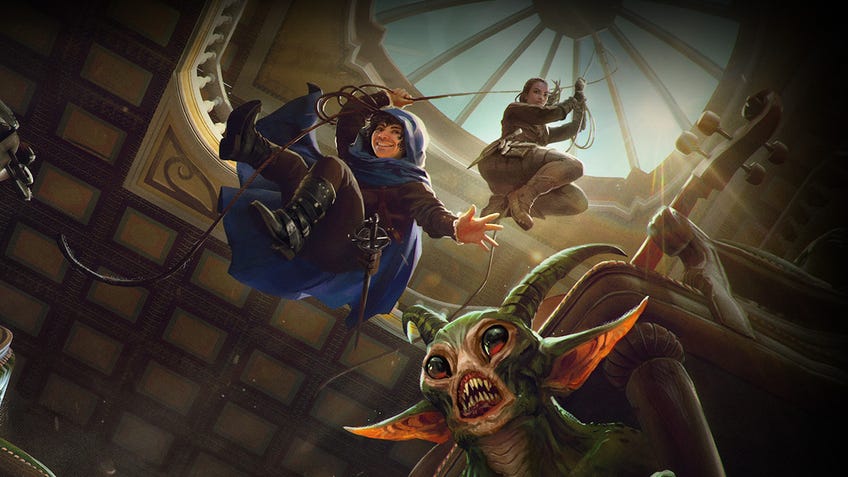
If your character is proficient in a skill, they automatically gain a +2 modifier to that skill, as well as the ability modifier associated with that skill - which will be listed next to the ability score on your D&D character sheet. For example, if you were proficient in investigation and your intelligence ability score modifier is +2, then your overall proficiency modifier is +4 to whatever you roll whenever you use investigation.
If you aren’t proficient in a skill, then you don’t circle or fill it in – simply write your ability score modifier next to it and use that whenever you’re asked to roll for it. You can eventually become more proficient in a skill, which will grant an additional +2 to your already existing bonus. As you level up, your proficiency bonus will increase alongside your various other attributes.
At first, skills may seem less impressive when compared to feats or spells. However, they do make for a more well-rounded character, particularly outside of combat. Have a chat with your fellow D&D players, alongside your DM, to ensure that your party has a good mixture of combat and utilitarian ability.
9. Choosing your spells
The bread-and-butter of a spellcasting class
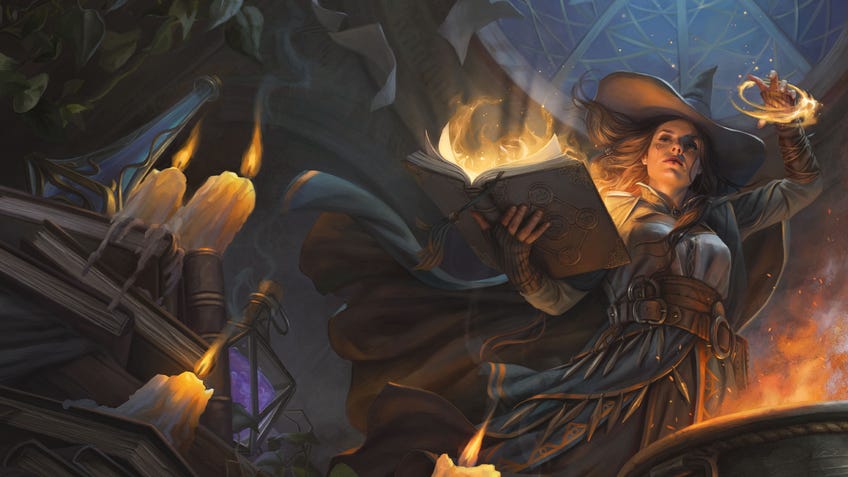
If you decide to create a character using a spellcasting class – such as a cleric, a sorcerer or a wizard – then you’ll be needing some spells in your arsenal. Which spells you decide to take will partly depend on the class you choose, as each class has access to certain spell lists, and the subclass you eventually decide to take later down the line.
Whilst some spellcasting classes will have a lot of choice when picking spells, such as sorcerers or wizards – other classes will be restricted to taking spells from very specific lists of class spells, like rangers or paladins. How much choice you have may affect which class you decide to make your character, as there is a benefit to being able to choose from a larger pool of spells. On the other hand, you might find the process of choosing spells a lot more overwhelming if you decide to make your character a certain type of spellcaster.
Some classes are given certain spells whenever they hit a certain level, whilst others will be able to choose from a list. Wizards are especially weird in that they can gain spells by finding them in the actual game world, which is why they’re a class that’s best suited to more experienced players. Sorcerers are also a lot more complicated to create and level up due to the large number of spells they have access to.
Choosing between spells can be decided by pure combat strategy – such as picking a good damage-dealing spell or spell that inflicts a negative status condition on enemies – or by their utilitarian value, such as the ability to create illusions for a distraction or being able to unlock a locked door. Some spells might just fit in well with the flavour of spellcaster you’re making, such as a fire-focused sorcerer or a cleric who worships a particular deity. A description for every spell featured in the D&D 5E Player’s Handbook can be found in the index section of the book, if you want to learn more about a specific one.
10. Choosing your equipment
What will you wield?
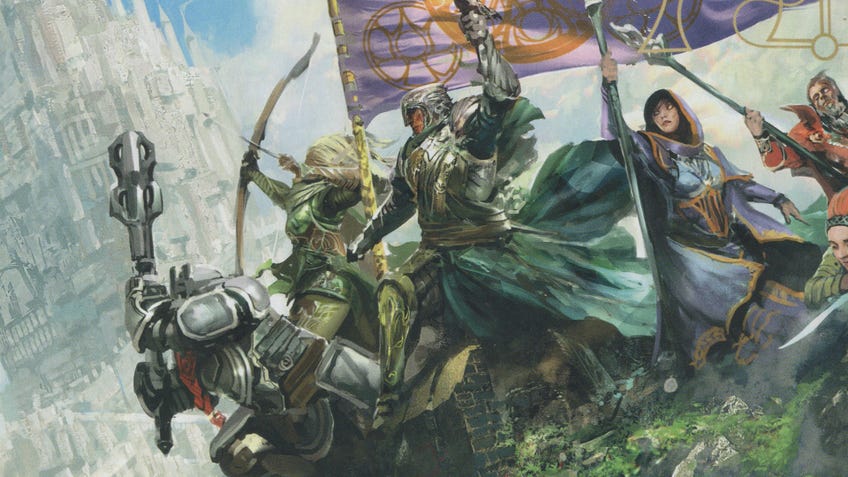
If your character isn’t a spellcaster – and sometimes even if they are – then they’ll be wielding a weapon of some kind. Which weapons your character will be able to wield could be dependent on their class and/or their race/species, with certain kinds of class and race/species being proficient in certain kinds of weaponry. For example, choosing a rogue will give your character proficiency in basic weapons – such as swords and daggers – whilst making your character a fighter will give you a lot more options.
What kind of weaponry you’re able to wield may affect your choice of class, especially if you plan on having your character swing a two-handed weapon or duel-wielding weapons – as only certain classes can do those things. First-level characters won’t have access to anything particularly fancy or impressive, with every class having a choice of equipment to choose from when starting out. Some classes are even able to carry more than one weapon with them, but not necessarily use both at the same time.
The equipment you take will depend on what choices your chosen class has, as well as how much money you begin your campaign with. Certain classes will be able to pick from different flavours of packs – such as an explorer’s pack – and your choice might be determined by how useful certain items in the packs might be or simply what makes the most logical sense for your character to carry.
Your starting wealth can be decided by either your DM or by yourself. Is your character from a wealthy merchant family? Are they nobility? Or are they destitute, with little more than their clothes on their back? Having money will allow you to buy certain items – within reason of what your starting location sells and how much you can carry – which will likely aid you in your campaign.
The D&D 5E Player’s Handbook has an index of various items you can find within the Forgotten Realms setting, containing descriptions of what they do and how much they cost.
